Art and justice: meet the Turner Prize winner creating our art commission
Helen Cammock is creating a commissioned artwork to mark our 200th anniversary, which will be displayed at the Law Society Hall on Chancery Lane. Inspired by admissions ceremonies, our historic building and her time working with solicitors, her three-part work explores justice – past, present and future. She shares the story behind it.
Driven by justice
“When I read the brief for this commission, I knew I wanted to acknowledge the hardships solicitors face and the difficult situations they navigate,” says Helen Cammock.
A Turner Prize winning multidisciplinary artist based in North Wales and London, Helen has worked across a range of media – from film and printmaking, to poetry and photography.
Her work grapples with complex themes, including oppression, resistance, voice, wealth and power, and history.
But before becoming an artist, Helen spent 10 years as a social worker, including supporting women and children affected by domestic violence and working with perpetrators of violence, as well as vulnerable young people.
These experiences gave her direct insight into the legal system and the solicitors working within it.
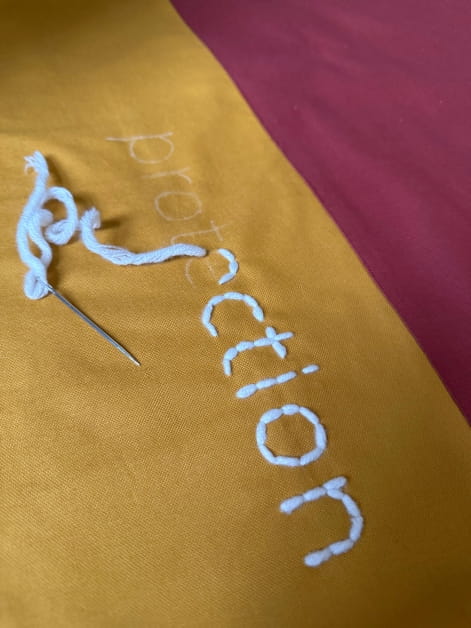
A work in progress: symbolic words are stitched into the cotton banner. Photo by Ella Gregory.
“Law is interesting to me because it’s important but also problematic,” she explains.
“There's a human side, and I imagine that’s an exhausting burden for solicitors, especially those in family, criminal and immigration law.”
The commission’s brief – to honour legal professionals who uphold justice – resonated with Helen.
Helen’s passion for justice is rooted in her upbringing. She says her Jamaican father, who worked as an art teacher in 1970s London, also became a magistrate after witnessing injustice firsthand.
“Many of the young Black men he taught were incarcerated for stealing sweets or cigarettes,” she recalls. “He wanted to be a part of a system where he made a difference. Both my parents raised us to be in touch with injustices in the world. I suppose I was waiting to engage with a project like this.”
Becoming an artist
Despite her father being an art teacher, Helen never felt drawn to art while growing up.
“As a child I was always climbing trees, captaining sports teams – I didn’t sit still. Art in school felt like it was only for people who could paint or draw,” she says.
At 35, motivated by a tutor at an evening class, Helen returned to university to study photography.
“As soon as I had a camera in my hand, I could see stories. I never imagined it would become my career – I thought it would just be three years away from the stress of social work.”
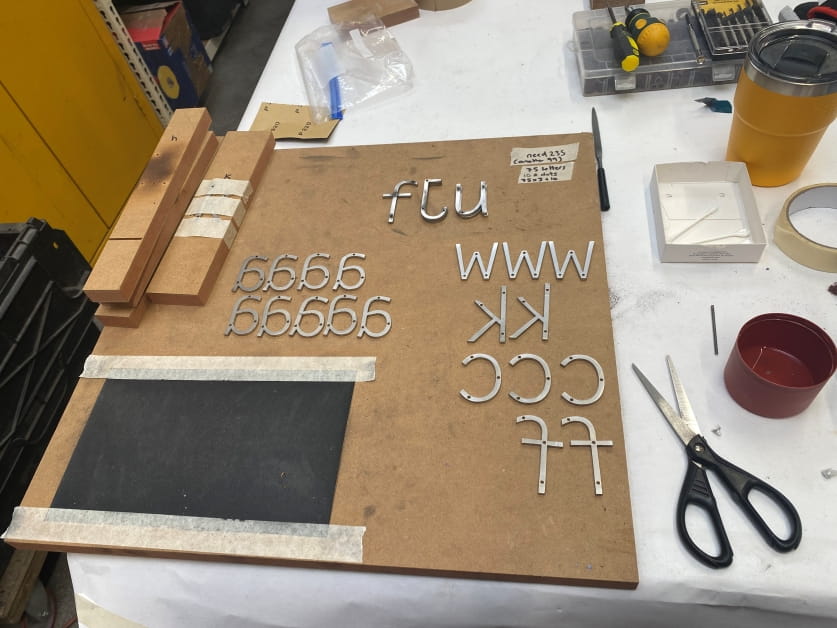
Steel letters being crafted in the workshop to be used in the ode. Photo by Helen Cammock.
Her graduation film caught the attention of artist Peter Kennard, who encouraged her to pursue an MA at the Royal College of Art.
“I was ready to go back to working with people, but he said, ‘I think you could change lives by making films.’”
A film that she shot in her father’s house in a single day, shifted her career plan – and led to her work today. The artist Lubaina Himid included it in a group show. That film is now part of the Tate’s permanent collection.
“I’ve been described as a visual poet. There’s something about the space poetry leaves for imagination – a gentleness that helps carry ideas,” Helen says.
Representing the profession
Despite her long-standing interest in justice, Helen had some initial trepidation about her approach to the commission for the historic hall.
“There was a point where I thought, ‘maybe they just want a celebratory statue or an object – perhaps my ideas won’t be what they’re after?’” she admits.
But Helen’s proposal – blending poetic language, visual symbolism and history – was selected because it reflected the core values of the legal profession.
Helen quickly found inspiration after learning more about the profession and taking a tour of 113 Chancery Lane.
“I wanted my work to speak to people through an encounter – a journey in the building,” she says.
“I wanted to deliver an experience that had a dialogue and a process to it. That led me to using different materials and forms.”
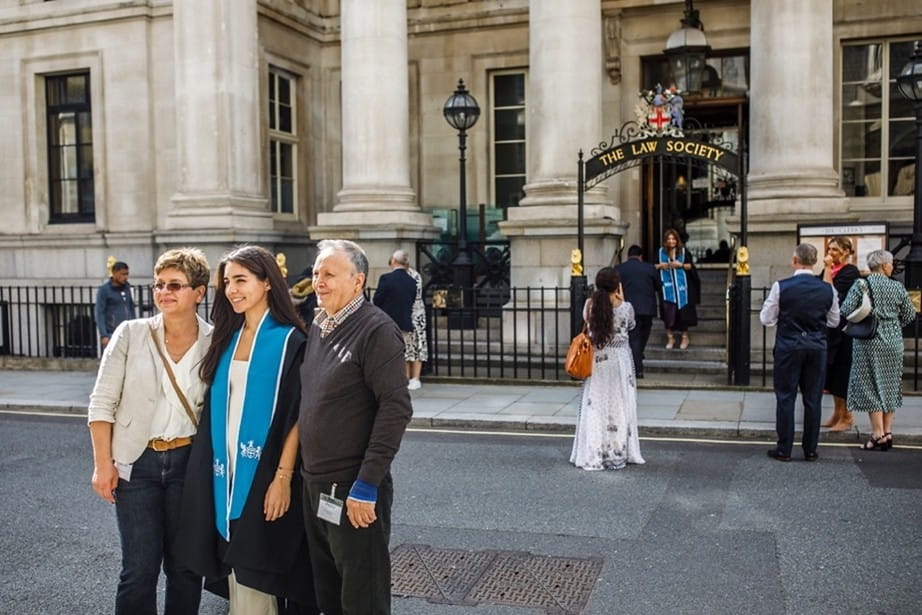
An admission ceremony day at the Law Society.
To refine her concept, Helen returned to the Law Society Hall for a second visit – which happened to coincide with an admissions ceremony, as new solicitors celebrated their qualification.
“There was a real excitement and energy in the building,” she says.
“Parents were taking pictures and it made me think about pride and the journeys people take to qualify.”
Helen’s vision quickly expanded. She decided to create not one, but three artworks – each woven together through poetry, textiles, metalwork, woodwork and line drawing.
Bridging past and present
Designed for the entrance of 113 Chancery Lane, Helen’s first piece is a poetic text.
“It’s a call to action, but also an acknowledgement that a legal career is a weight to carry – and that the ethics of the profession are really important,” she explains.
“It’s particularly for junior solicitors who are starting out, but I hope it speaks to those at all stages of their career.”
The poem bridges past and present, both in tone and material.
“The rhyme scheme has a historical resonance – it doesn't read like a contemporary poem,” she says.
“The materials are also a response to the legacy of the labour force in this country, as the ode is written in steel.”

Individual steel letters prepared and ready to be assembled into the ode. Photo by Helen Cammock.
Though Helen creates the vision for her pieces, she works closely with other expert craftspeople to bring her ideas to life.
“It was exciting going into the workshop of the creative fabricator I work with and seeing the idea take shape.”
The breadth of law
Helen’s second piece ‘A Balanced Scale’ is a fabric banner that will hang by the doors to the library, reinforcing its message.
“It’s a reminder of the responsibility that solicitors carry,” she explains.

Colours inspired by legal graduation regalia. Photo by Ella Gregory.
Stitched in wool are words based on a 1903 speech from American president Theodore Roosevelt: ‘no-one above the law no-one beneath protection.’
The banner, she says, “represents protest, and the politics of what people have achieved through protest. I like to think some people will see it and remember a moment in their life or generationally when protest has been significant.”
The colour palette draws from legal graduation hoods and sashes.
“I worked with a creative pattern cutter from the fashion industry,” Helen says.
“I sketched the design, she interpreted it, we had a back and forth and then I sourced the fabric.”
The cotton fabric itself references the UK’s colonial history, says Helen.
“The materials in all three works – cotton, wool, steel and wood – are deliberately unpretentious and historically significant,” she adds.
“They run against the feeling of grandeur of the gold lions outside; they have a humbleness to them that reflects the breadth of law today.”
Solicitors’ experiences
The third piece explores one of the brief’s central themes: the changing face of the profession and the diversity of those who form it.
“I don't really do representational drawing,” Helen explains. “Instead, I chose to represent the emotions that solicitors experience throughout their practising life.”
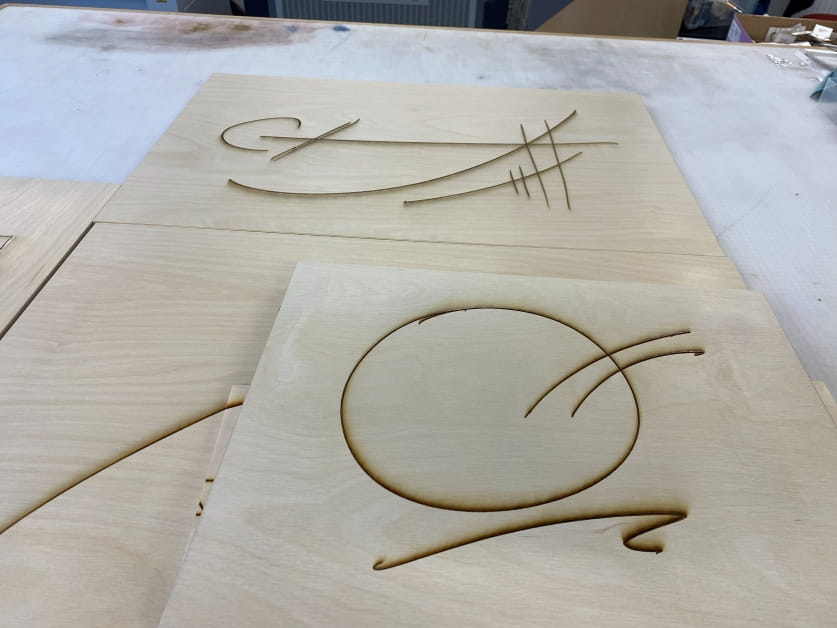
Laser cut panel in the workshop. Photo by Helen Cammock.
‘A People’s Practice’ features five line drawings cut into plywood canvases.
“They look a little like ink drawings,” she says. “And the way they’re etched into the wood creates a beautiful oiled halo effect.”
Each drawing reflects a different imagined emotion or state. “Some are circular and swirling – a nod to the chaos and speed of law. Others are angled with sharp edges to represent a system that can be brittle.
“I also wanted to capture the range of joy and sadness that solicitors might experience – whether that's dealing with end-of-life matters or divorce in the family court.”
Open to interpretation
Helen hopes the work prompts people to reflect on justice, injustice, and inequity – but ultimately, “I want them to take away whatever they might take away – that's what art is about – interpretation, engagement, connection.”

Helen visiting the Law Society at 113 Chancery Lane. Photo by Amy Murat.
Though she admits she’s not a legal expert, Helen has discovered a parallel between law and poetry.
“The law is written down and lawyers are expected to interpret it. The skill is in how it's interpreted – and in many ways that is the same as reading poetry.
“There's an intended space in poetry for us to interpret or extract what we want from what's being said, but what we know about legal systems is that they can present as a defined or concretised system but there is as much room for interpretation as in a poem."
Whilst legal texts aren’t designed to evoke emotions, she says, “there's something about the human mind that always wriggles around to find the space in language.”
It’s in this space between intention and interpretation that Helen believes art truly comes alive:
“A piece of work is not complete until it has a dialogue with someone who's viewing it or engaging with it.”
About the artwork
We’re proud to feature Helen’s three-part commission, ‘A People’s Practice’, at 113 Chancery Lane as a legacy of our bicentenary celebrations.
Members can visit 113 Chancery Lane from 18 November 2025 to experience Helen’s artwork.
About the artist
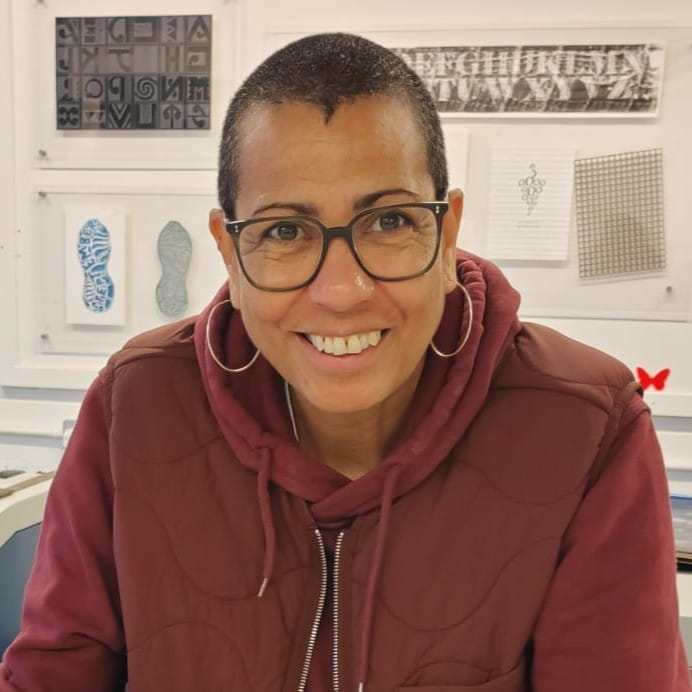 "I thought I’d always be a social worker. It felt like a natural path after my sociology degree” says Helen.
"I thought I’d always be a social worker. It felt like a natural path after my sociology degree” says Helen.
“However, changes in the late 1990s left me disillusioned.
“After 10 years, I needed something that allowed my head to escape, so I joined an evening photography class.”
That class eventually led to her new career.
Today, Helen is a highly regarded multidisciplinary artist working across photography, film, poetry, text, song, printmaking and performance.
In 2019, Helen was joint recipient of the Turner Prize for The Long Note, a film exploring the role of women in the 1968 civil rights movement in Derry, Londonderry.